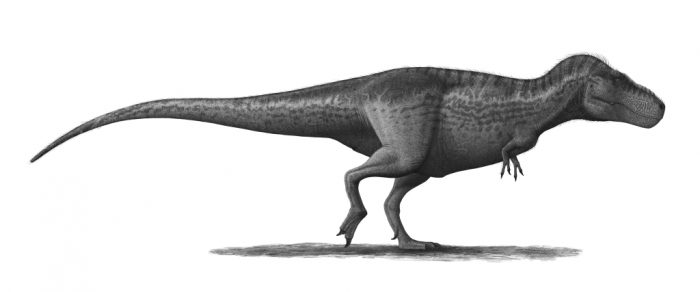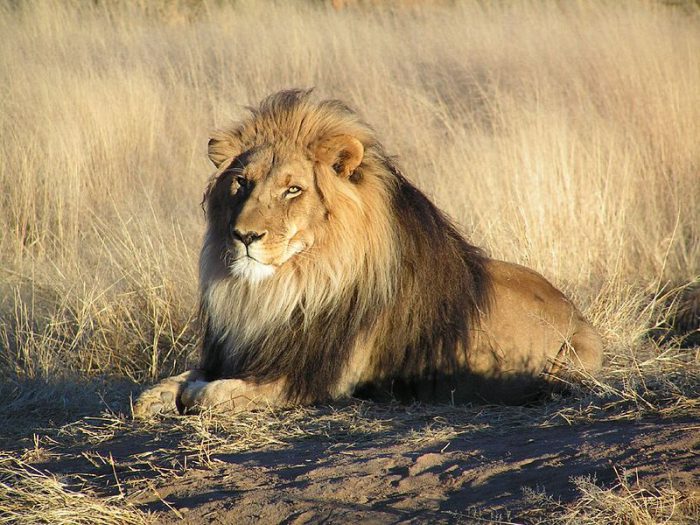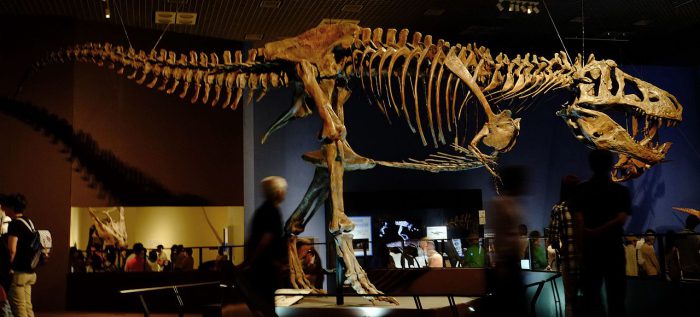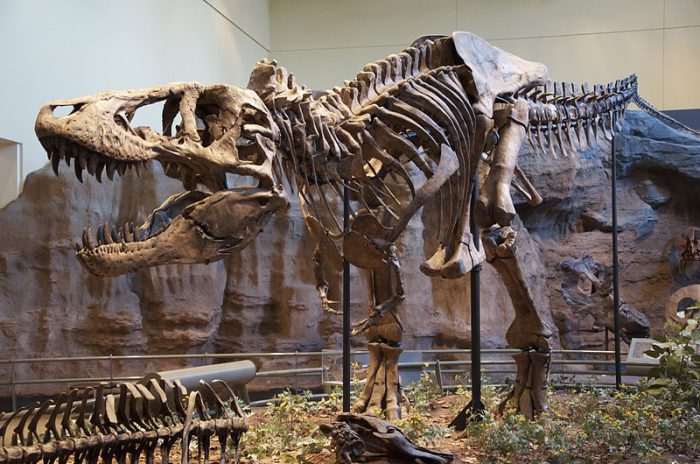May 1 to 16 is Science Odyssey, a celebration of all things science! OWLconnected is recognizing this two-week event with lots of science content, as well as with a terrific contest, presented by our friends at the Natural Sciences and Engineering Research Council of Canada (NSERC). Details are at the end of this post—be sure to enter!
How many rexes?

Hungry dino, coming through! (Wikimedia Commons)
The T. rex is the most famous, most feared, most iconic of all dinosaur species. What we know of them, we know from the nearly 100 fossils that have been discovered and studied over the years by paleontologists. That's only a tiny fraction of all of the tyrannosaurs that every lived. But how tiny?
A new study, led by professors at the University of California Berkeley, thinks that it knows the answer. According to their work, 2.5 billion Tyrannosaurus rexes have lived on planet Earth. That's the all-time number, stretching across the 2.5 million years in history (from about 68 to 66 million years ago) that the enormous predator existed.
At any one time, the study estimates that there would've been about 20,000 T. rexes in the world. That figure is similar to the numbers of a modern top predator: the African lion. Which makes sense, because even though lions are a lot smaller, their place in their ecosystem is the same as T. rex's was. The baddest predator in the land.
Follow the law

The T. rex of today: the lion. (Wikimedia Commons)
All of these numbers are fascinating, but how do the researchers know that they're accurate? Ultimately, like all estimates, it's just a guess. (The same goes for nearly all current wildlife population numbers, by the way!) But this guess is based on science. Let's check out how it works.
In order for any animal to survive, it needs to be able to feed itself. This is how it gets the energy to keep its body humming along. The larger the animal, the more energy it needs. Using an equation known as Demuth's Law, biologists can use an animal's body mass (essentially its size based on height/length and weight), its longevity (average lifespan), and the size of its range (the total area where its species existed) to determine how many of that animal could reasonably survive together at the same time.
Demuth's law is often with live animals—in this case, the scientists just used the same equation on an extinct animal.
T. rex, by the numbers

Fossils can tell researchers a lot about the weight, diet, even lifespan of an extinct animal. (Wikimedia Commons)
Using fossil evidence, researchers made their estimates. T. rex weighed between 5,200–7,000 kg (11,450–15,400 lbs.). It was estimated to have lived for 25–30 years. And its range was guessed at about 2.3 million sq. km (890,000 sq. miles), about a quarter the size of Canada.
Finally, they had to guess their energy requirements per day (they said it was close to what a komodo dragon needs). Once they had all of that information, they were able to estimate that a healthy population was about 20,000 individuals per generation.
So how did they get 2.5 billion Tyrannosaurus rexes all time? They multiplied 20,000 by the 127,000 generations of the dinosaurs that would've existed over 2.5 million years. Wow, who knew that getting into dinosaurs would feature so much math?!
Of course, today there are zero tyrannosaurs alive. Which is a shame, really. With over 2.5 billion T. rexes in history, you'd think they could've saved a few for us? We'd take care of them, we promise!
Contest alert
Don't forget to enter the Science Odyssey Contest! Click HERE TO ENTER.

 How many T. rexes could exist at once? That was the question that researchers put to themselves. (Wikimedia Commons)
How many T. rexes could exist at once? That was the question that researchers put to themselves. (Wikimedia Commons)









